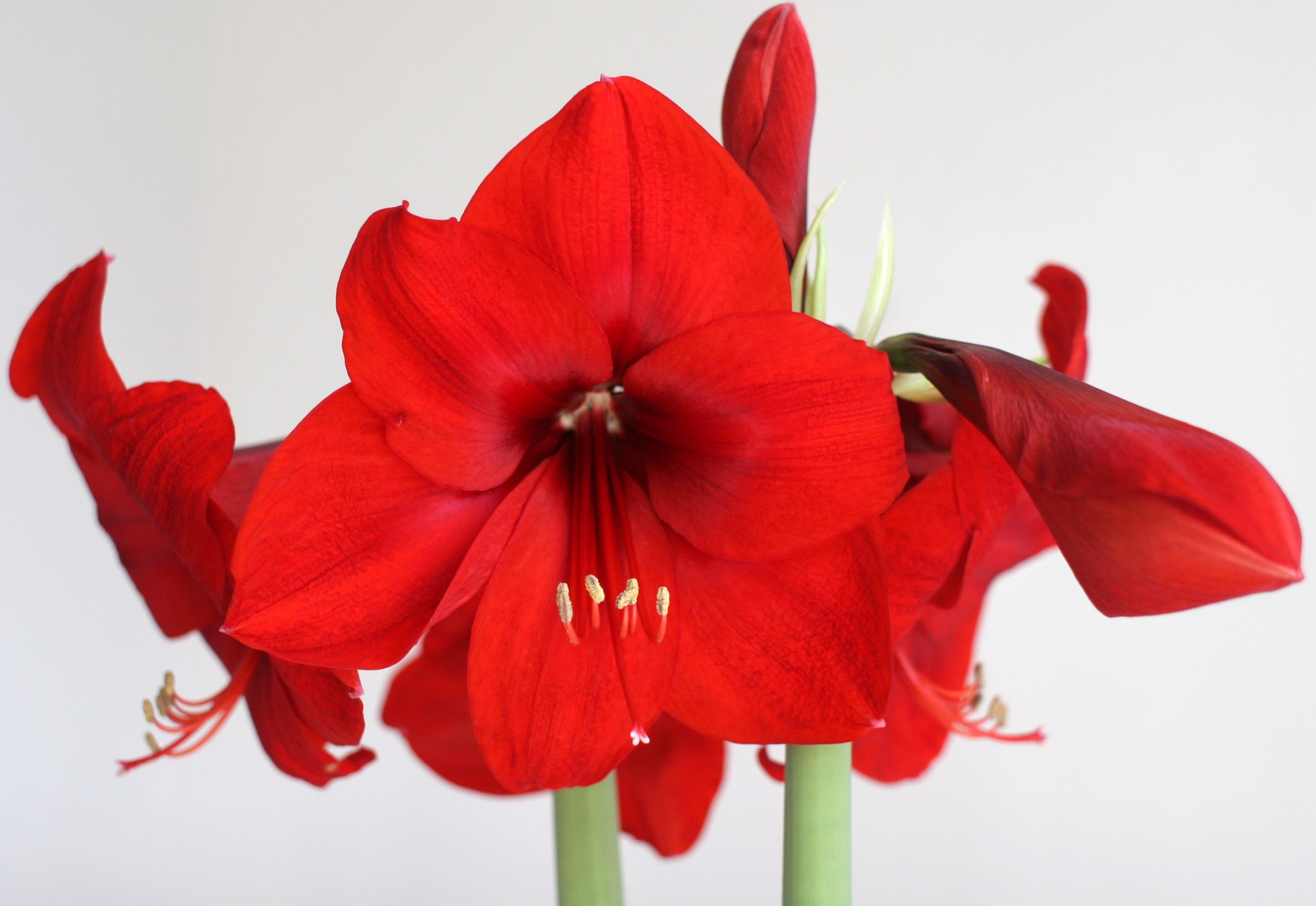The holidays will soon be here and the stores will be flush with decorations galore including holiday plants. For many of us, the holidays would not be the same without the traditional plants of the season such as amaryllis, Christmas and Thanksgiving cactus and, of course, the queen herself, the poinsettia.
Poinsettias
Years ago, poinsettias could only be found at florist shops but eventually nurseries and garden centers began to sell these beauties as hybridizers launched in many new color choices. Growers also could offer other styles of plants, such as hanging baskets and tree forms. The newer generations of poinsettias can be light red or dark red with green leaves or very dark green leaves; they can be several shades of pink or salmon, traditional white or speckled and splotched. There is even a plum-colored poinsettia! In short, there is something for every taste and decorating style. With so much plant availability, a few pointers are in order.
It will be common to see poinsettias for sale in the grocery store, the big box stores, and many other retailers who may or may not have any staff designated for the care of the plants, so be wary and keep these points in mind when choosing poinsettia plants:
• Choose plants that look healthy and are not droopy or wilted. They should be full, balanced, and good looking from all sides.
• Bracts (modified leaves) should be well colored with no green showing and the true flower (the yellow center or cyathium) should not be shedding pollen as that indicates a plant past its prime.
•Look at how the plants are displayed. They should not be crowded or touching, standing in water, or sleeved before purchase time.
• Insist that your plants be wrapped well in a paper sleeve before you take them to your car. Be mindful that these are tropical plants and are easily damaged by cold and that means any temperature below 50 degrees. When you get the plants home, carefully remove the paper covering and:
• Place poinsettia in indirect light for six hours daily;
• Be careful not to let leaves touch window panes or be in an area subject to drafts or by open windows or doors;
• Keep in mind that poinsettias in bloom prefer a daytime temperature in the range of 60-70 degrees and night time around 55 degrees or as close to that as possible;
• Check the soil daily and water when dry and the entire plant feels light when picked up.
Water thoroughly and allow water to drain away and be discarded—do not allow plant to sit in water! If you purchase poinsettias as gifts, slip the sleeve down or off until you are going to deliver the plants and re-cover at delivery time. With proper care, poinsettias will last well past the holiday season.
Amaryllis
Amaryllis bulbs are native to South Africa and their enormous trumpet-shaped flowers make a statement! Typically you can find amaryllis as a loose bulb or as a potted plant. They prefer to grow in a pot not much larger than the bulb itself and should be potted high with half of the bulb showing. Water well after planting and place in a sunny window. Keep the bulb on the dry side until flower buds begin to emerge; leaves will follow. Growth is fast and dramatic and flower stalks may need to be staked. There may be several flowers per stalk and there can be one or more stalks per bulb. Cut off flower stalks after all blooms have faded and continue to care for the bulb as a houseplant with fertilizing done regularly during the long-day months to encourage bloom the following year.
Cactus
Thanksgiving and Christmas cactus are sold in bud and bloom for the holidays but with care they will easily set bud again the following year. These are short-day plants and respond to decreased daylight by setting bud. They also will respond to temperature change, so by placing these cactus plants outside in a sheltered area for the summer with increased water and fertilization, they will receive all the clues they need to set bud for future holiday bloom. Plants should be brought indoors before the threat of frost.
Re-flowering resource
Should you want to try your hand at re-flowering your poinsettia or other holiday plants, contact your local Cornell Cooperative Extension office for individual guidelines.
Susan Pezzolla, Master Gardener Coordinator, Horticulture Educator, Cornell University Cooperative Extension, 24 Martin Road, Voorheesville, NY.





